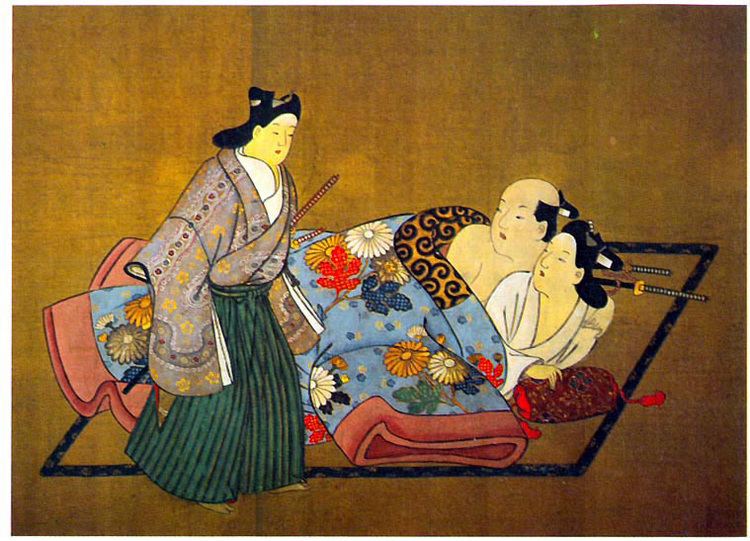Name Miyagawa Choshun | ||
 | ||
Miyagawa Choshun (Japanese: 宮川 長春; 1683 – 18 December 1753) was a Japanese painter in the ukiyo-e style. Founder of the Miyagawa school, he and his pupils are among the few ukiyo-e artists to have never created woodblock prints. He was born in Miyagawa, in Owari province, but lived much of his later life in Edo, where he died.
Choshun trained under artists of the Tosa and Kano schools, as well as under the master of early ukiyo-e, Hishikawa Moronobu. These influences are evident in his works, along with those of the Kaigetsudo school, but ultimately Choshun, as the founder of a new school of painting, has a unique style all his own. His figures have a soft, warm femininity about them, and Richard Lane considers his coloring among the best in all of ukiyo-e art. His works are almost exclusively of courtesans, and in his works these figures are fuller, and more voluptuous than those of many other artists, in particular those of the somewhat later artist Harunobu. Though many of his pieces are clean ones of courtesans, Choshun and his students also produced a great number of works of shunga (erotic paintings).
Miyagawa Choshun had a number of pupils, including his son Shunsui, Choki (who may have also been his son), and Issho.
In 1751, a few years before his death, Choshun was commissioned by an artist of the Kano school to perform some restoration work at the Nikko Tosho-gu. When Choshun was not paid for his work, an altercation erupted which ended in the death of the Kano artist at the hands of Choshun's son. As a result, Choshun was banished from Edo for a year.
